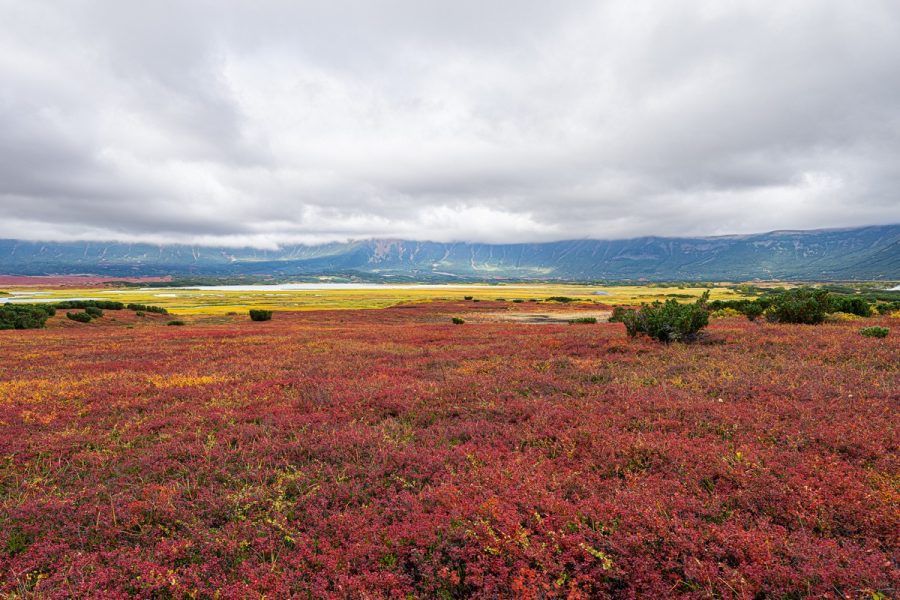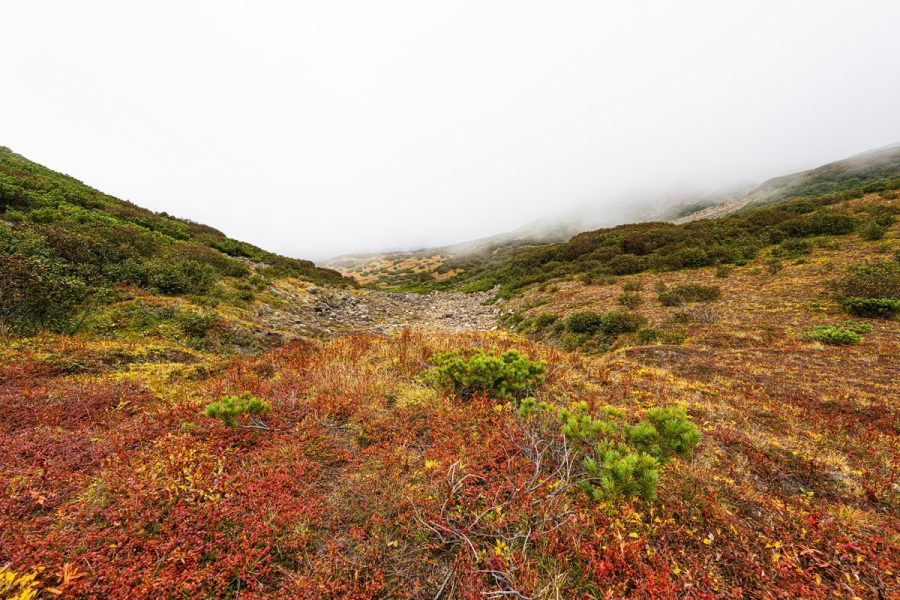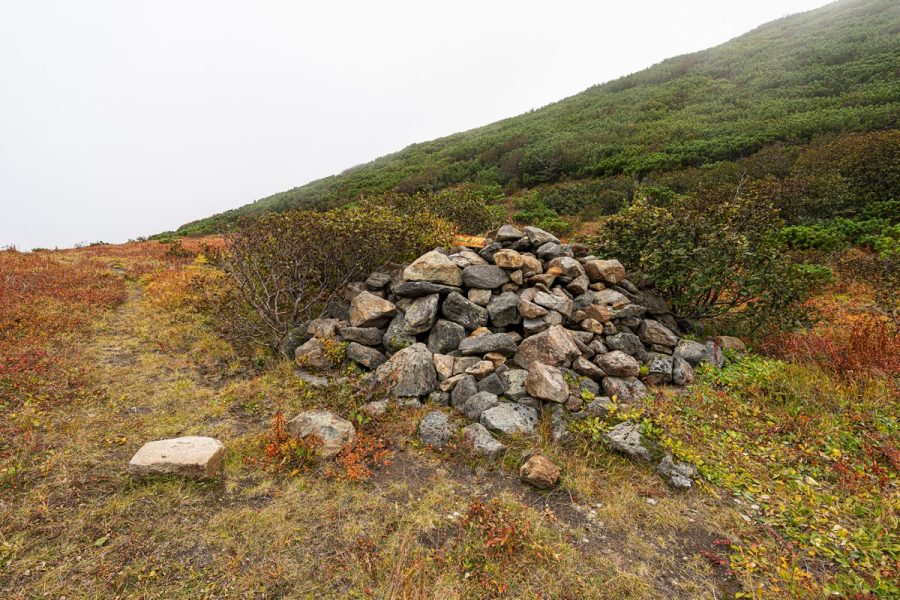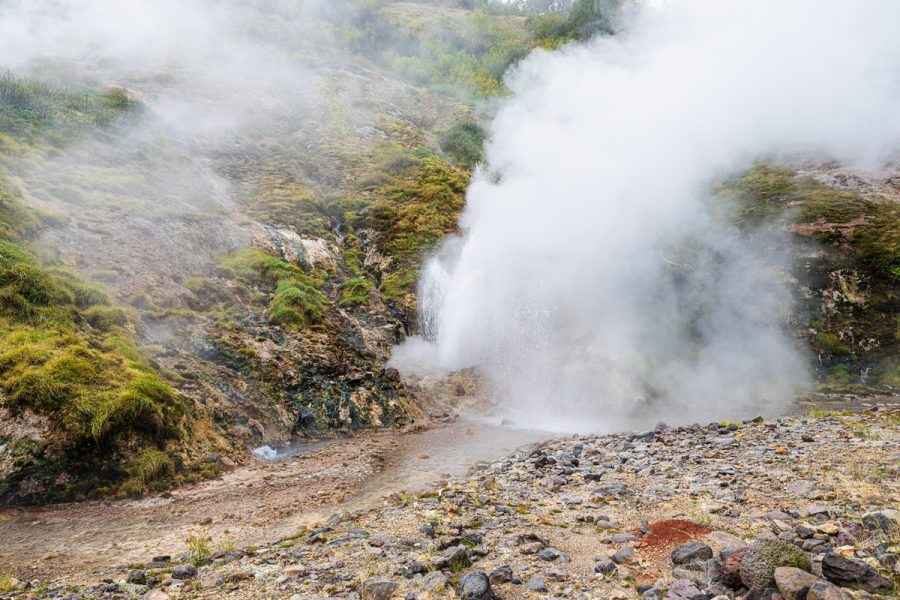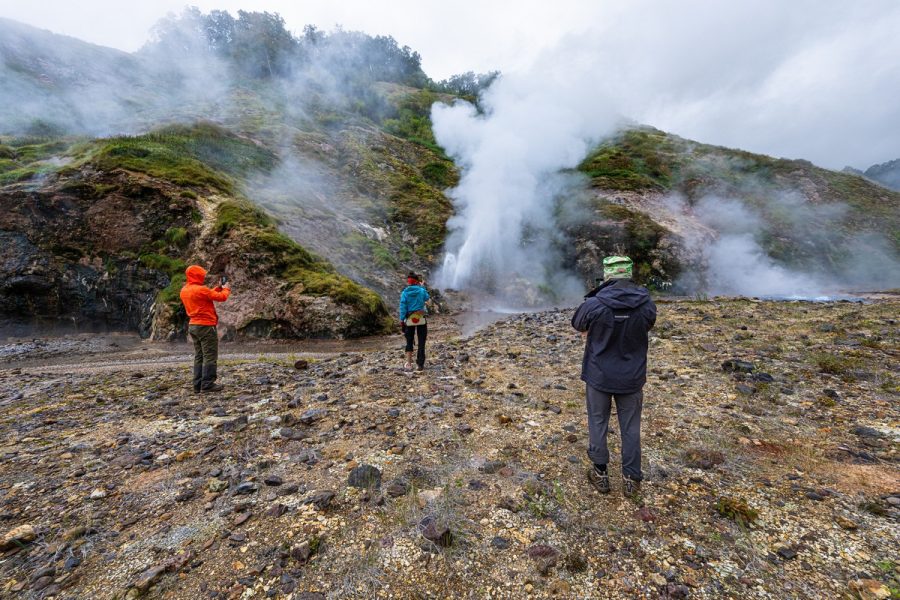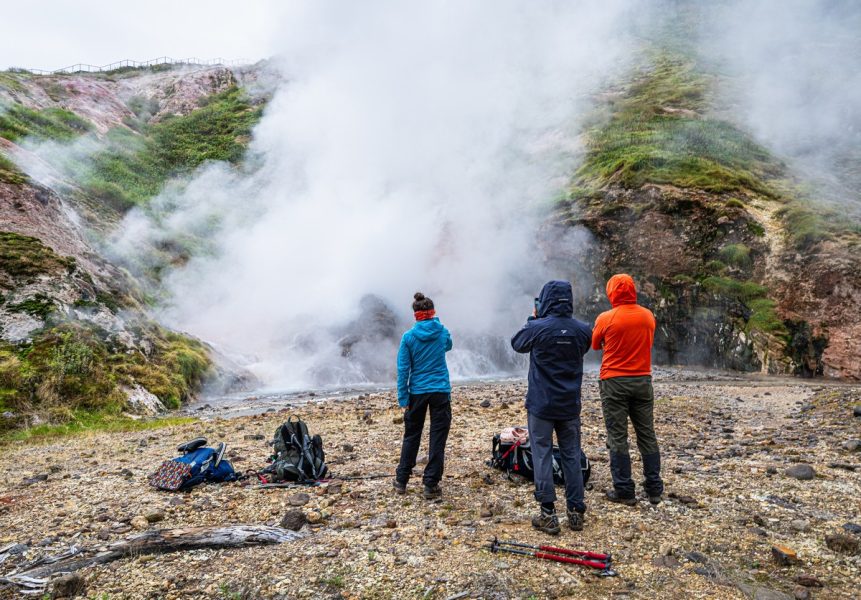November 25, 2025
Uzon to the Valley of Geysers on foot – autumn 2025 edition.
Kamchatka is full of absolutely magical – even fairytale-like – places. There’s the Klyuchevsky volcano group, and Tolbachik and its surroundings; in the south there’s Ksudach, Kurile Lake, and the Kambalny and Koshelevsky volcanoes. The Uzon Caldera and the Valley of Geysers, however, belong to a special category of volcanic beauty. And just like last time, after an hour-and-a-half’s stroll around Uzon, we were taken over by a powerful urge to walk to the Valley of Geysers…
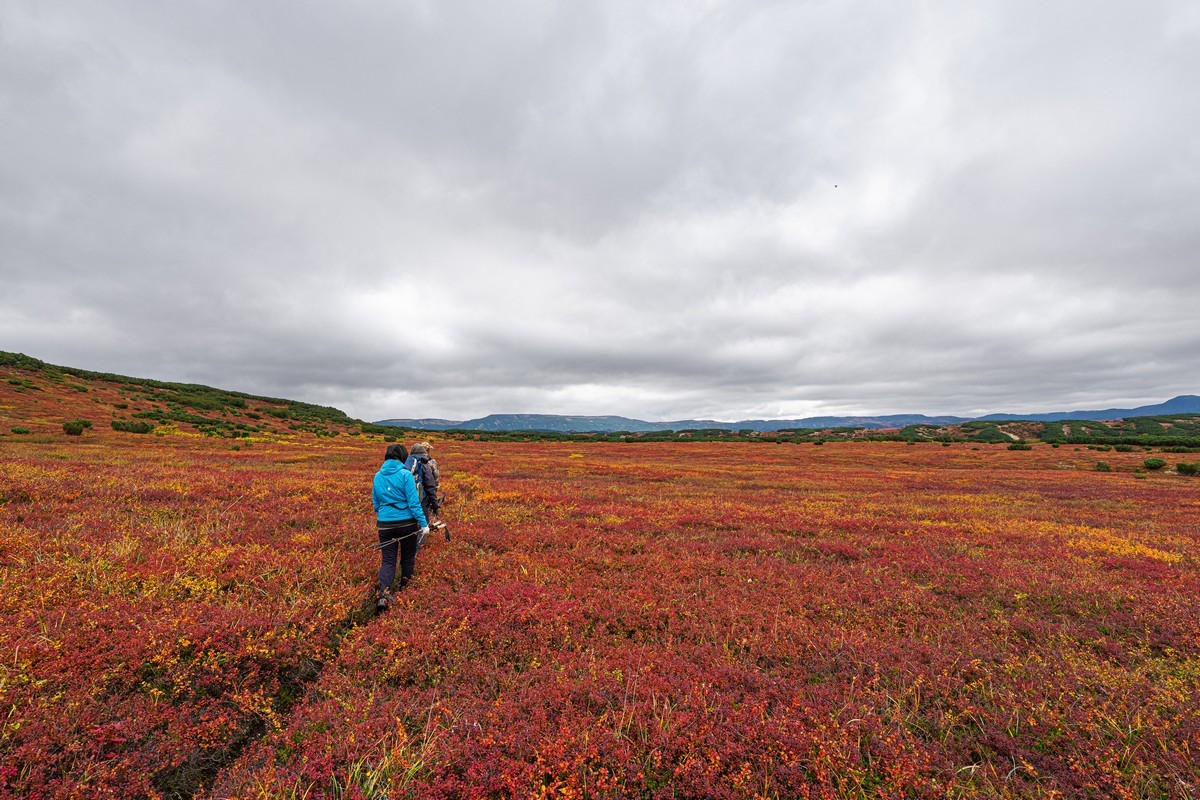
It’s not even that far, really. “Just 10 kilometers!” our guide, Denis, a man with years of experience, announced cheerfully. But we know he always measures distances in a straight line. Sure enough, it’s exactly 10km from Uzon to the Valley of Geysers as the crow flies. As the Kamchatka adventure-tourist walks, however, it’s closer to 15km since you have to follow the contours of the landscape. And it’s soooo worth it. There’s a trail, too – you can just about make it out here in the middle:
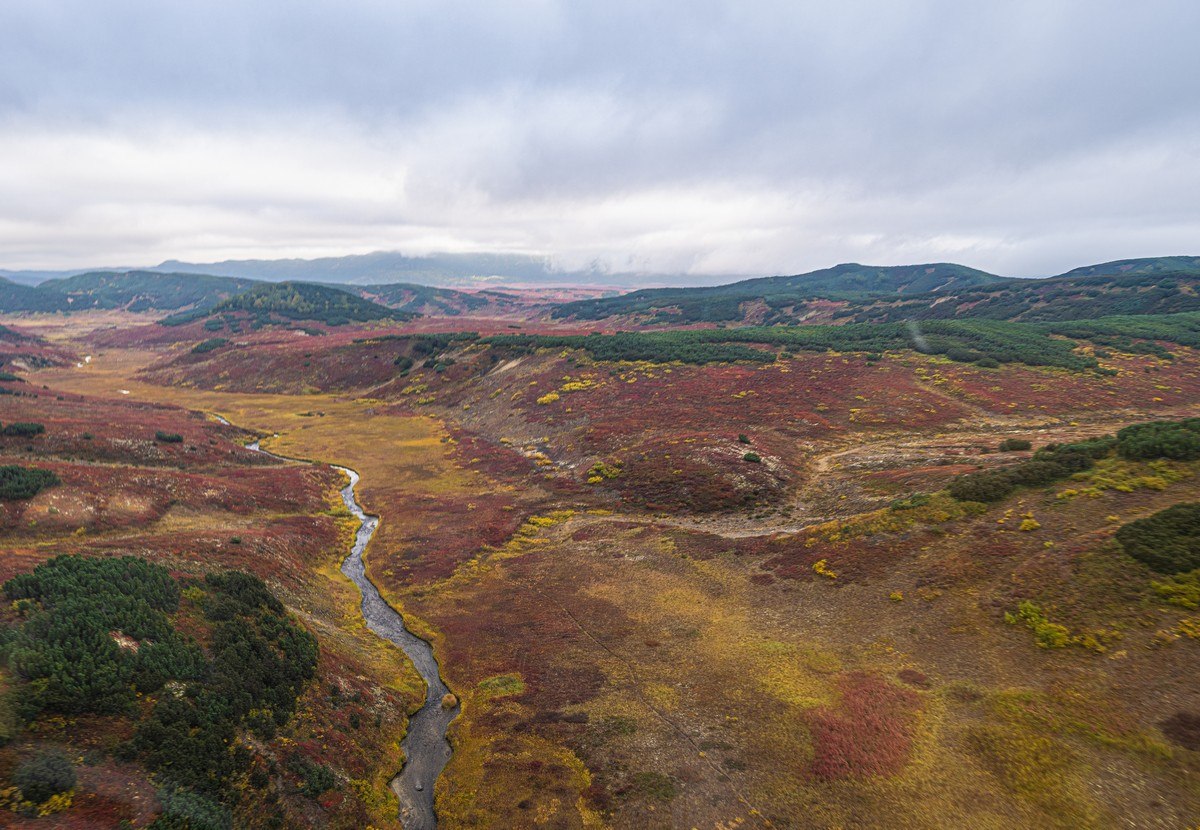
Alright, let’s go! We kept looking around, left and right, soaking in these magnificent views:
By noon we were even granted a little sunshine!
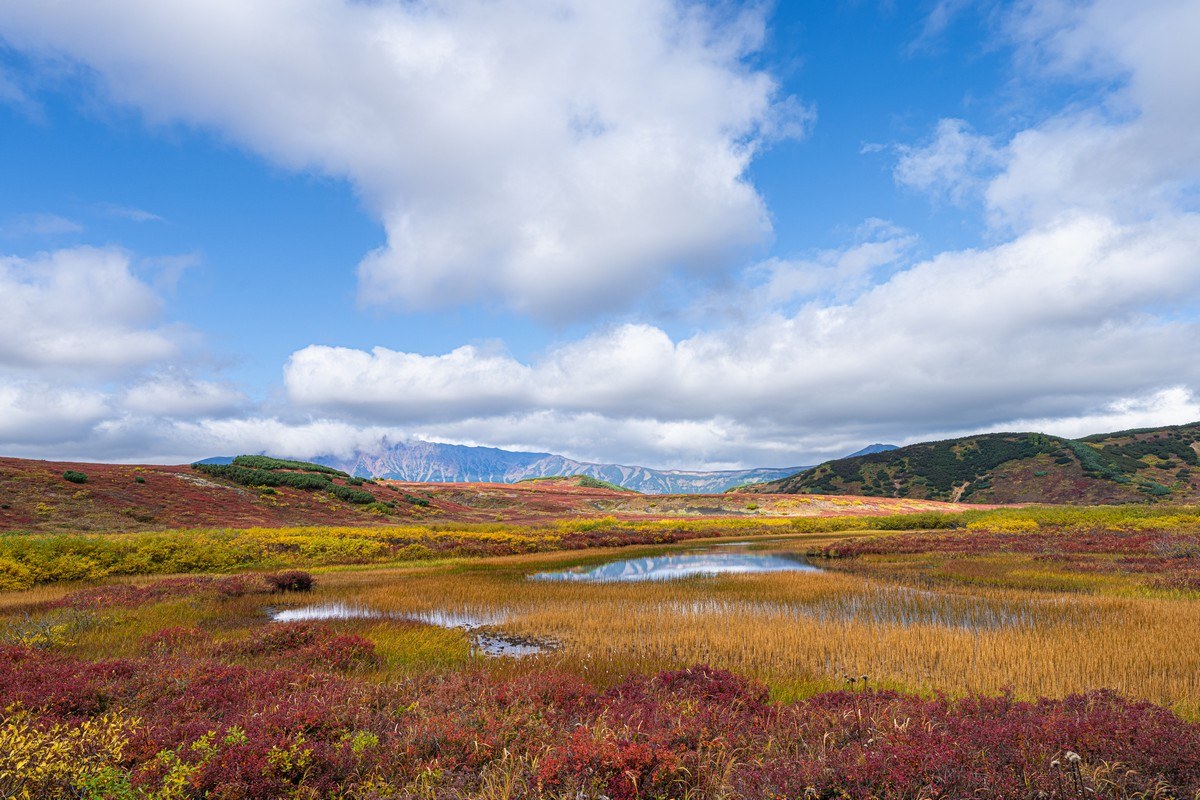
We came to the Glukhoy ranger station about a third of the way. The easiest third…
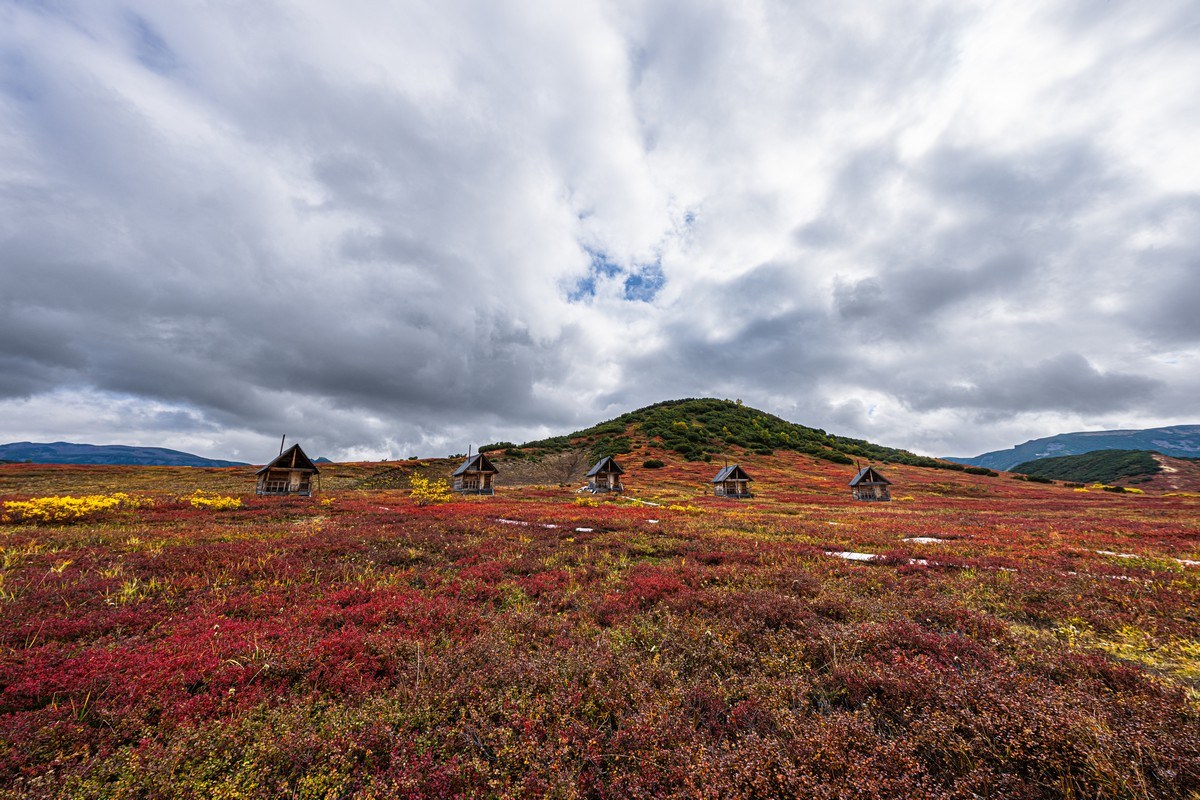
We continued to the pass. On the way we startled a bear; sadly, it declined a photoshoot and briskly vanished into the bushes. Here’s the pass itself:
A quick rest, and then came the most challenging third of the journey: the descent…

Sometimes, scrambling uphill is actually easier than picking your way down. The trail into the Valley of Geysers is a perfect example of this.
After about six hours of hiking across terrain of varying levels of comfort (rather – discomfort), encountering sometimes no trail at all on the final descent, we finally made it ->
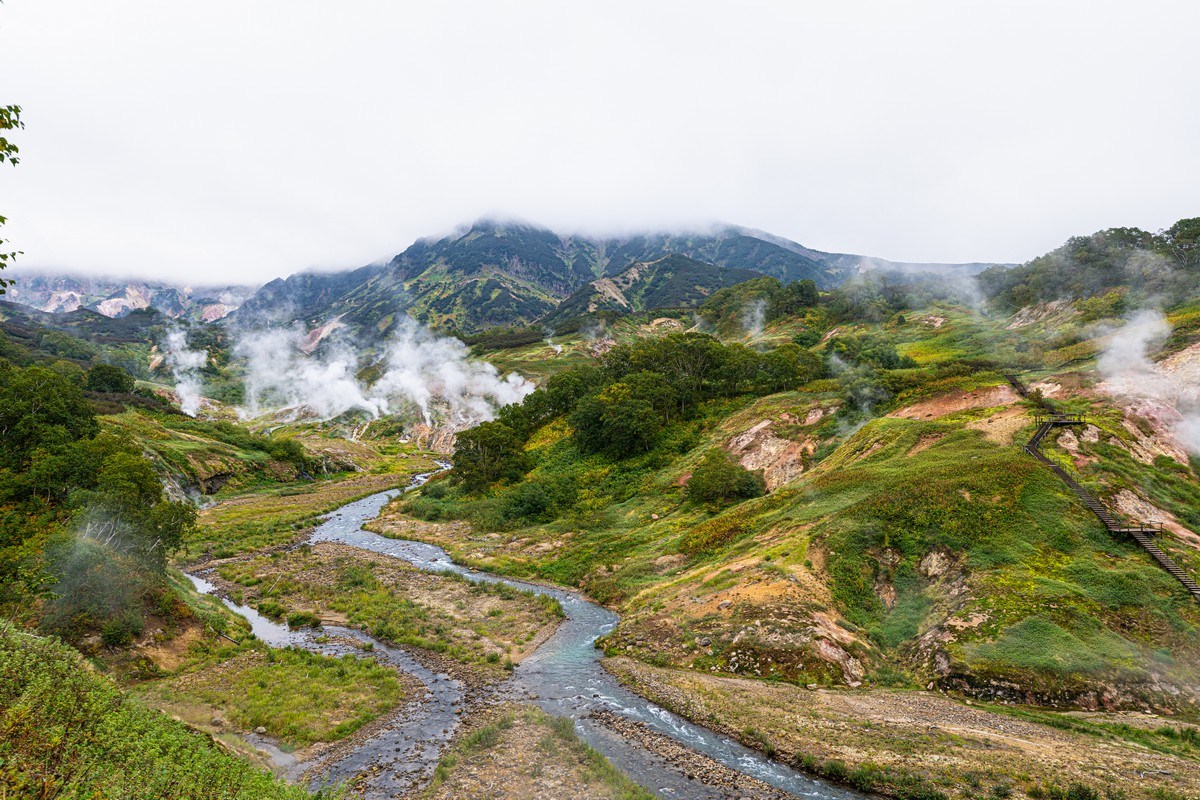
Tourists don’t get to see the valley from this side – they’re dropped off on the opposite slope and stick to the specially built boardwalks. The only way I know to be able to see these alternative views is to hike in from the Uzon Caldera (or from Glukhoy). That’s how you get to see a completely different picture:
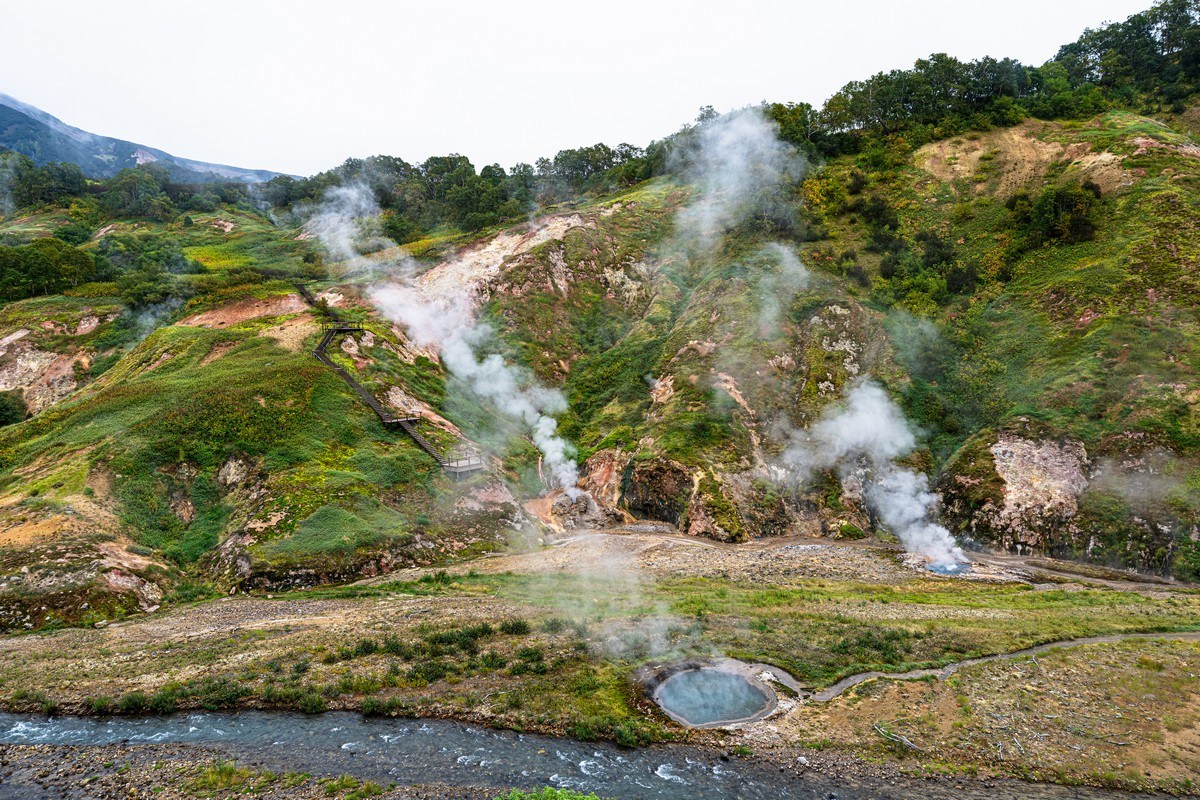
Vitrazh (Stained Glass) – a group of geysers created this natural wonder:
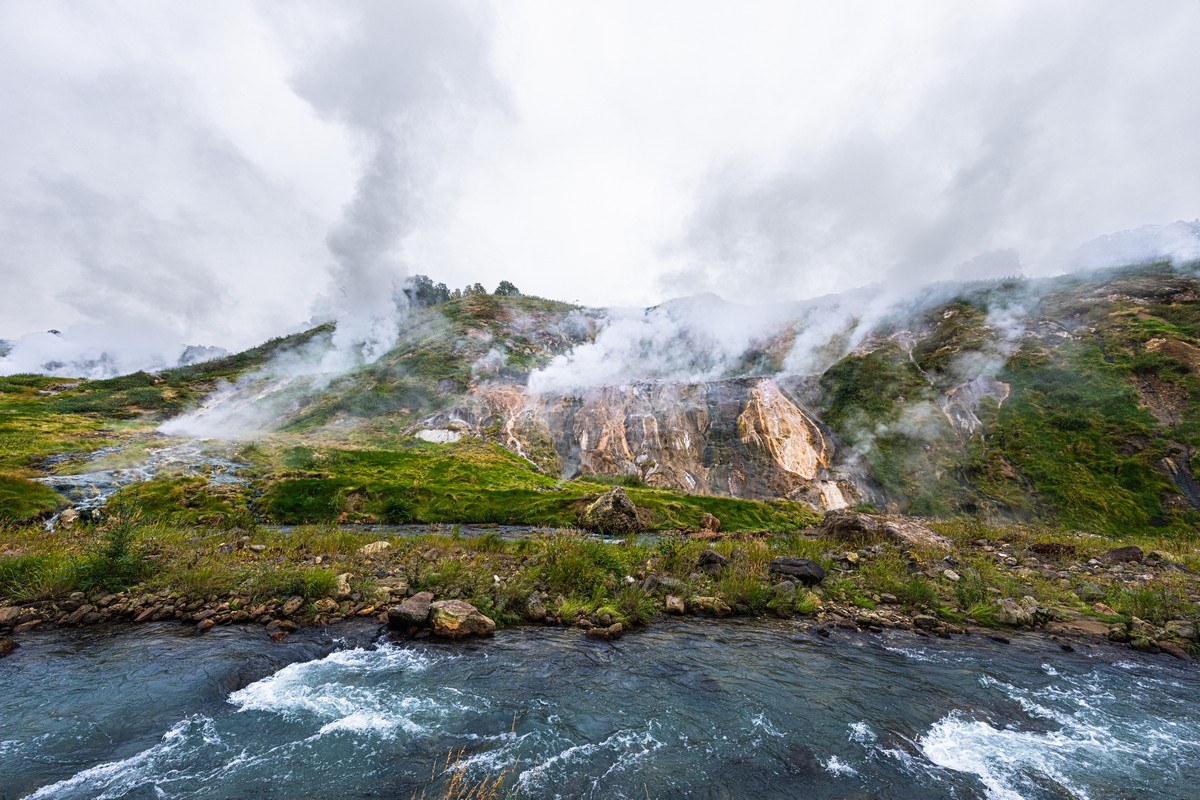
The Geysernaya River is quite warm. Well, to be more precise, it’s not too cold. This makes it comfortable to ford it:
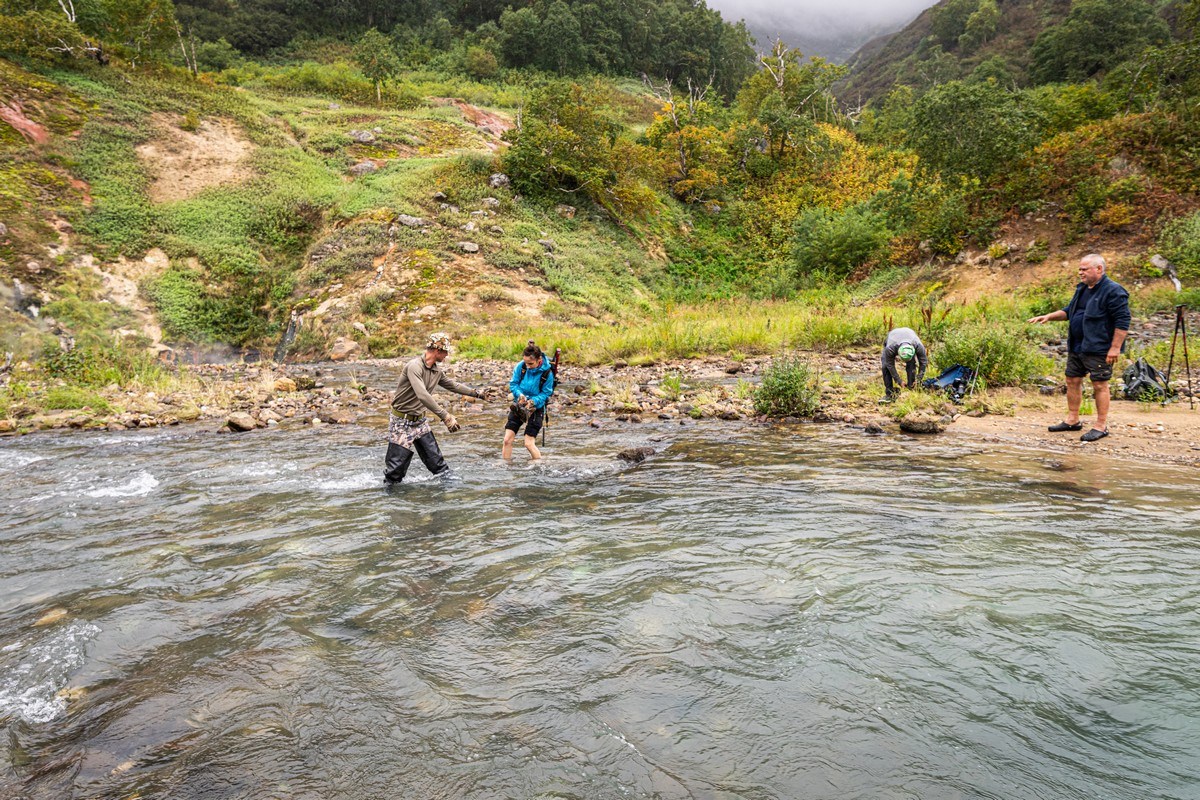
Not just comfortable but most enjoyable too! ->
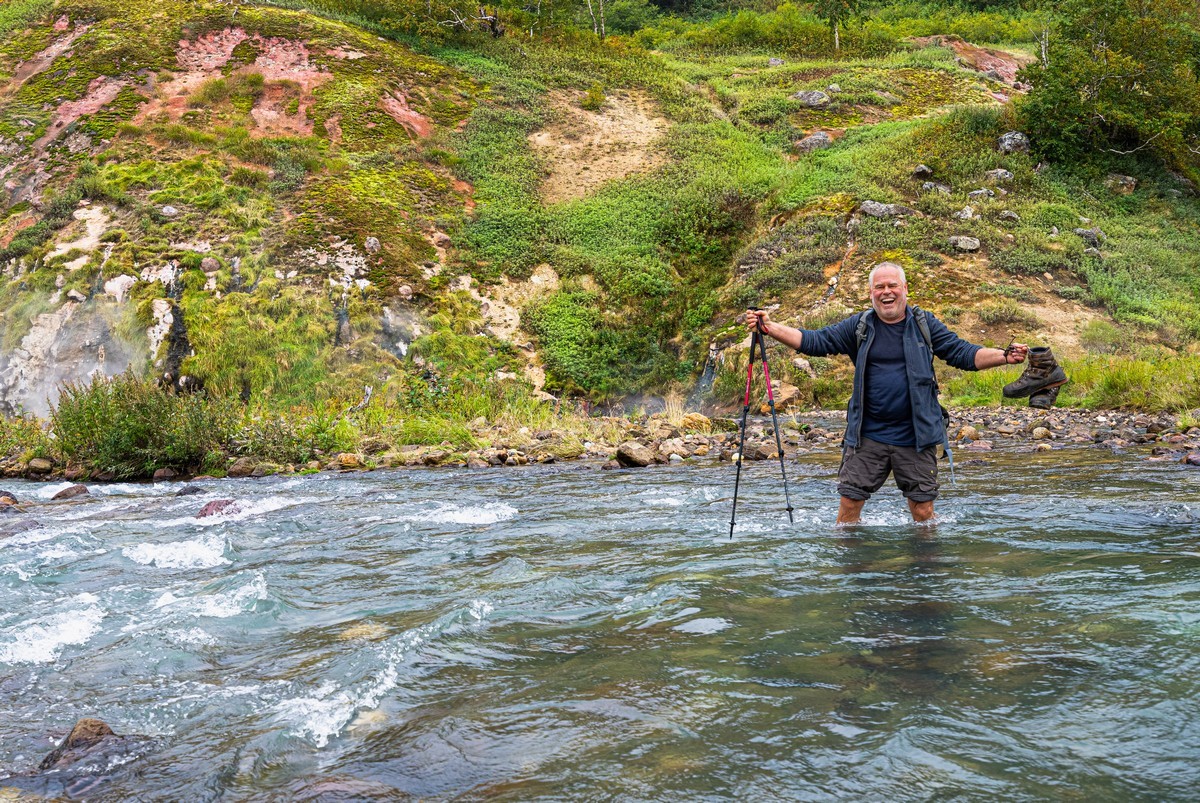
The views along the river – just gorgeous! ->
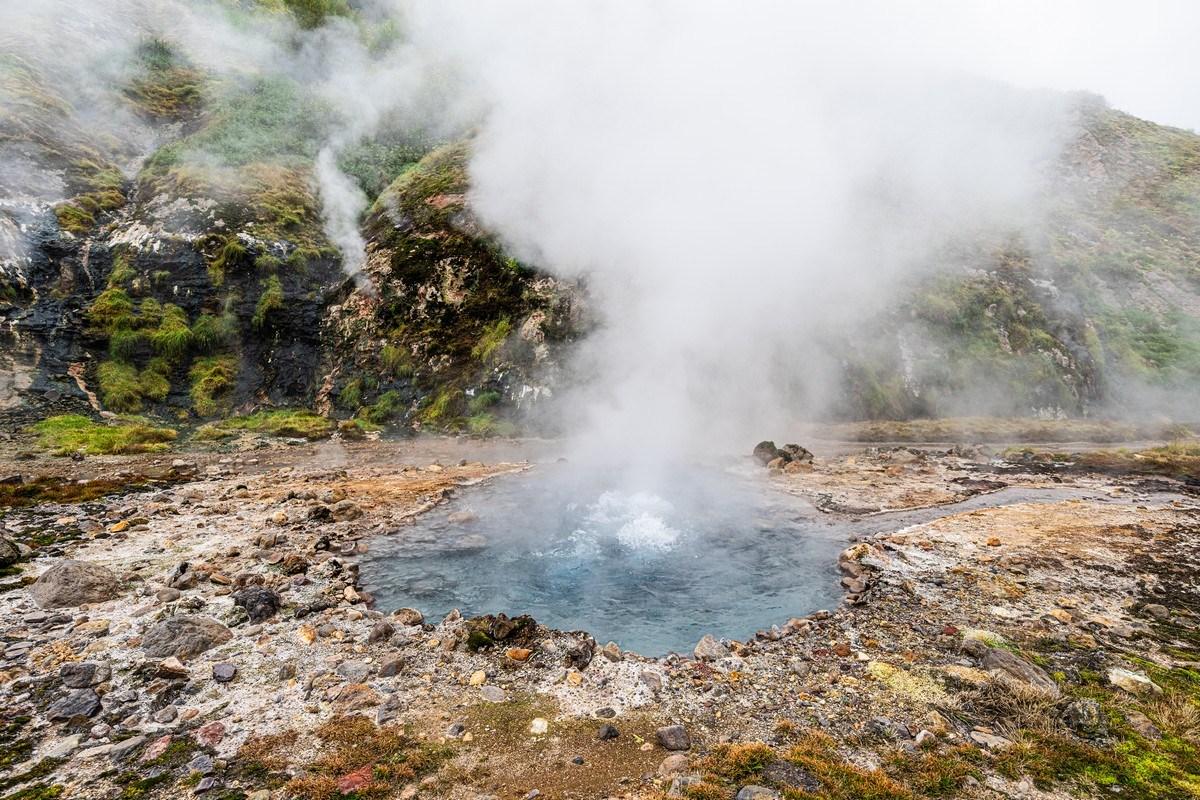
And you get to see geysers erupt right in front of you!
The steam rising signals the final stage of a geyser’s eruption cycle:
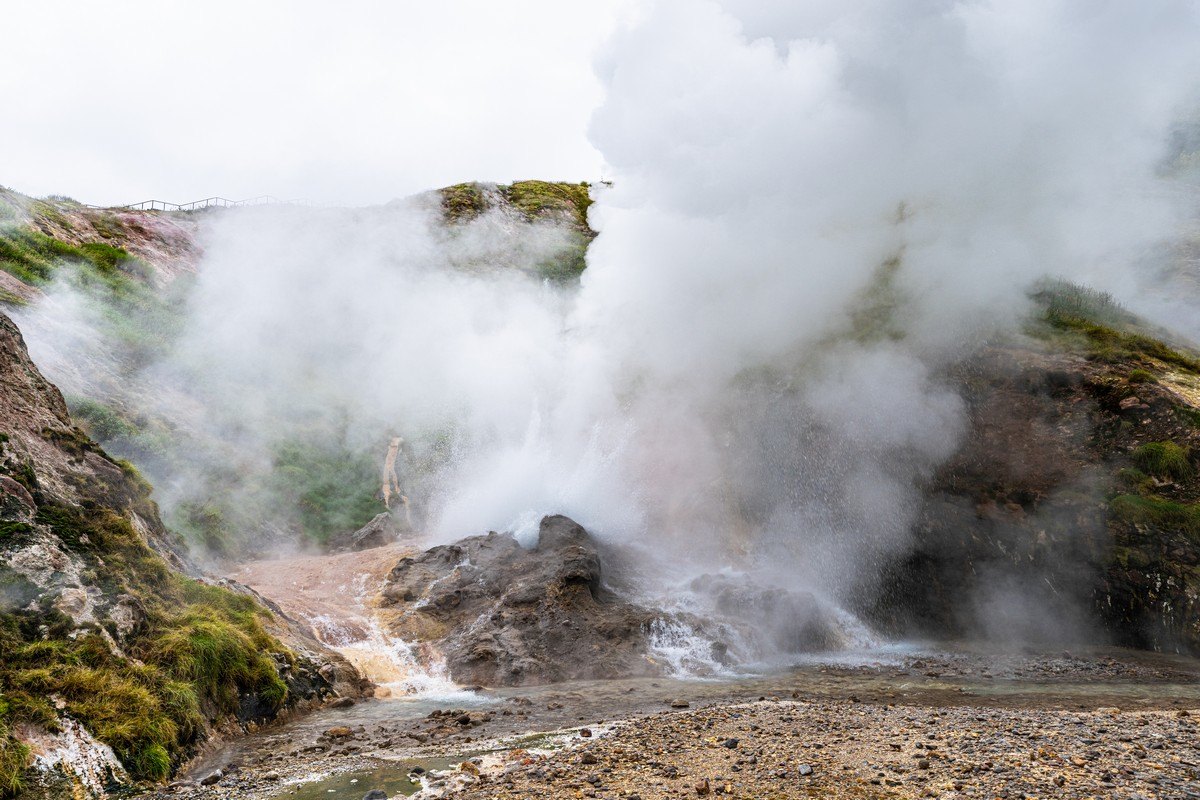
And that’s it, we’ve arrived!
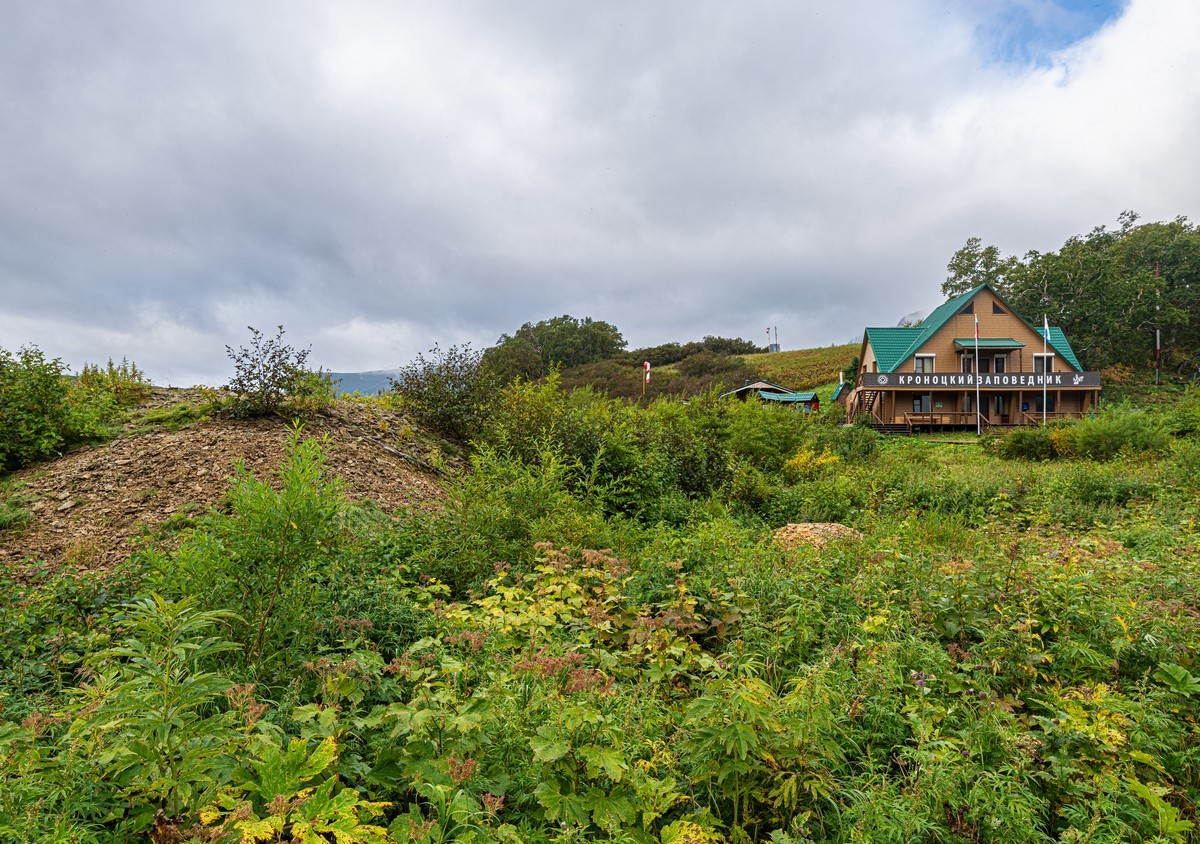
Now for a quick historical digression…
Before June 2007, tours of the Valley of Geysers were more… varied. You could enjoy views like this from the other side of the stream:
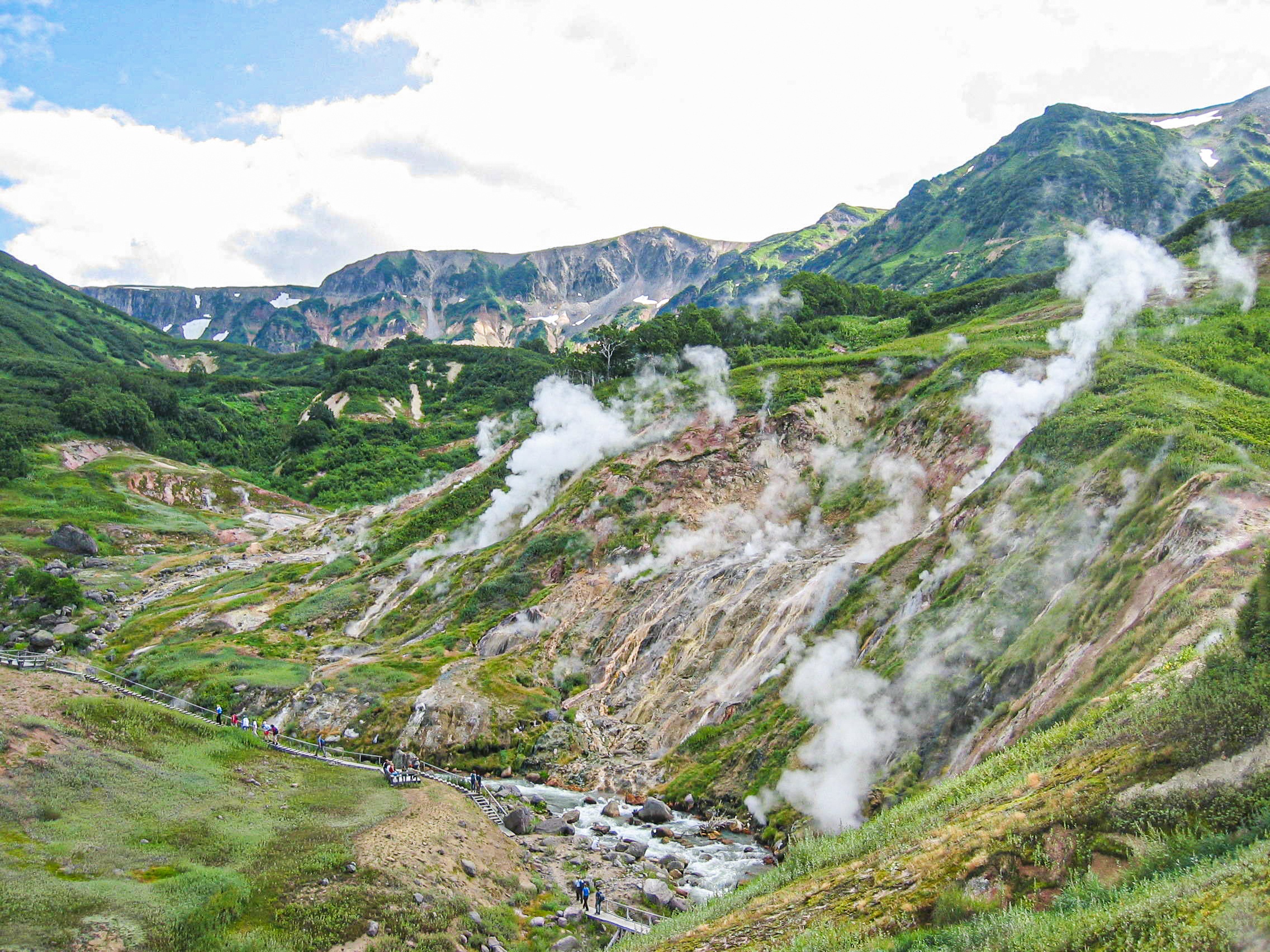
There used to be a bridge for crossing to the other side of the valley:
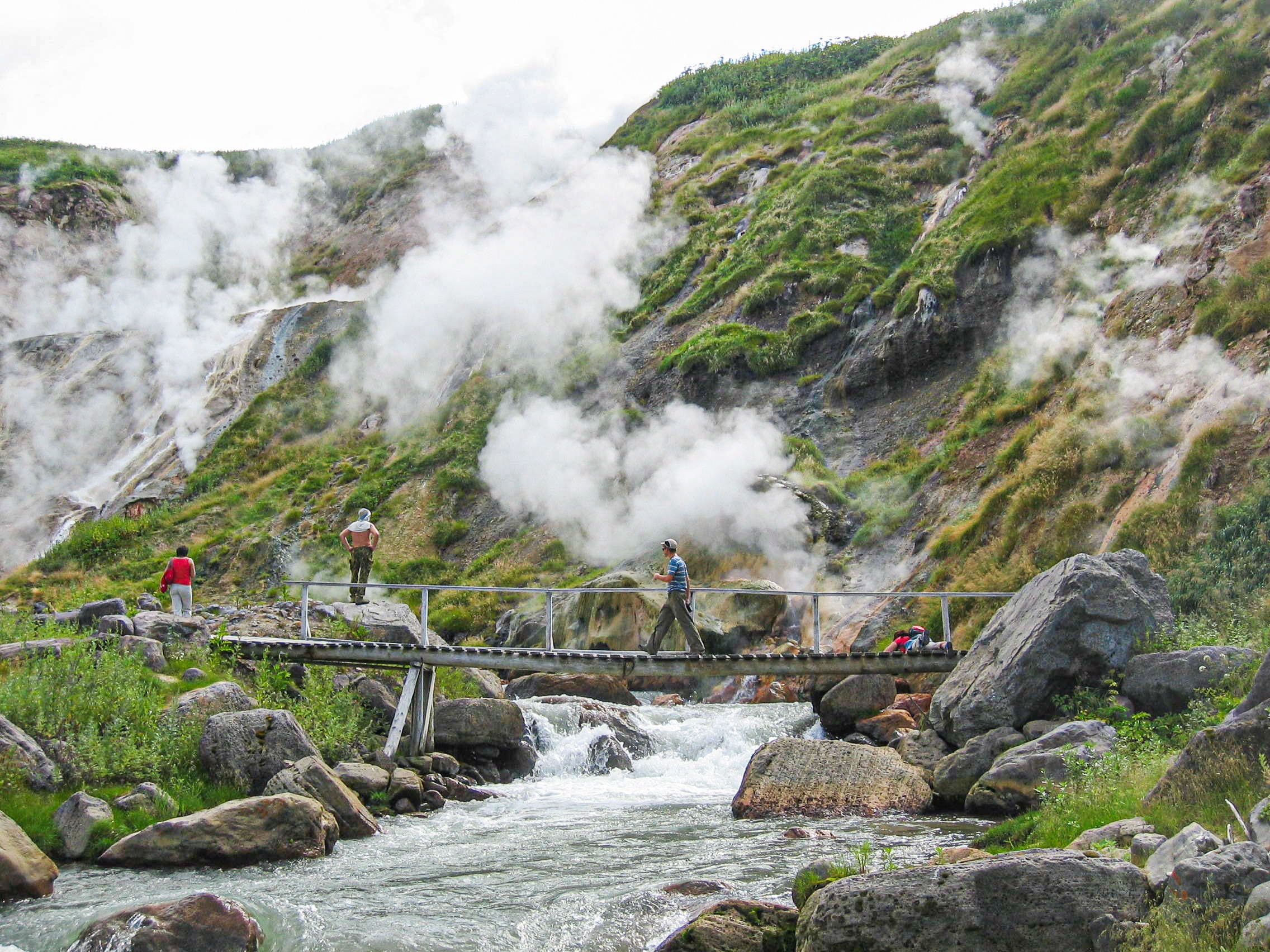
Over there, you could enjoy the sights of Vitrazh and various other geysers and pulsating springs:
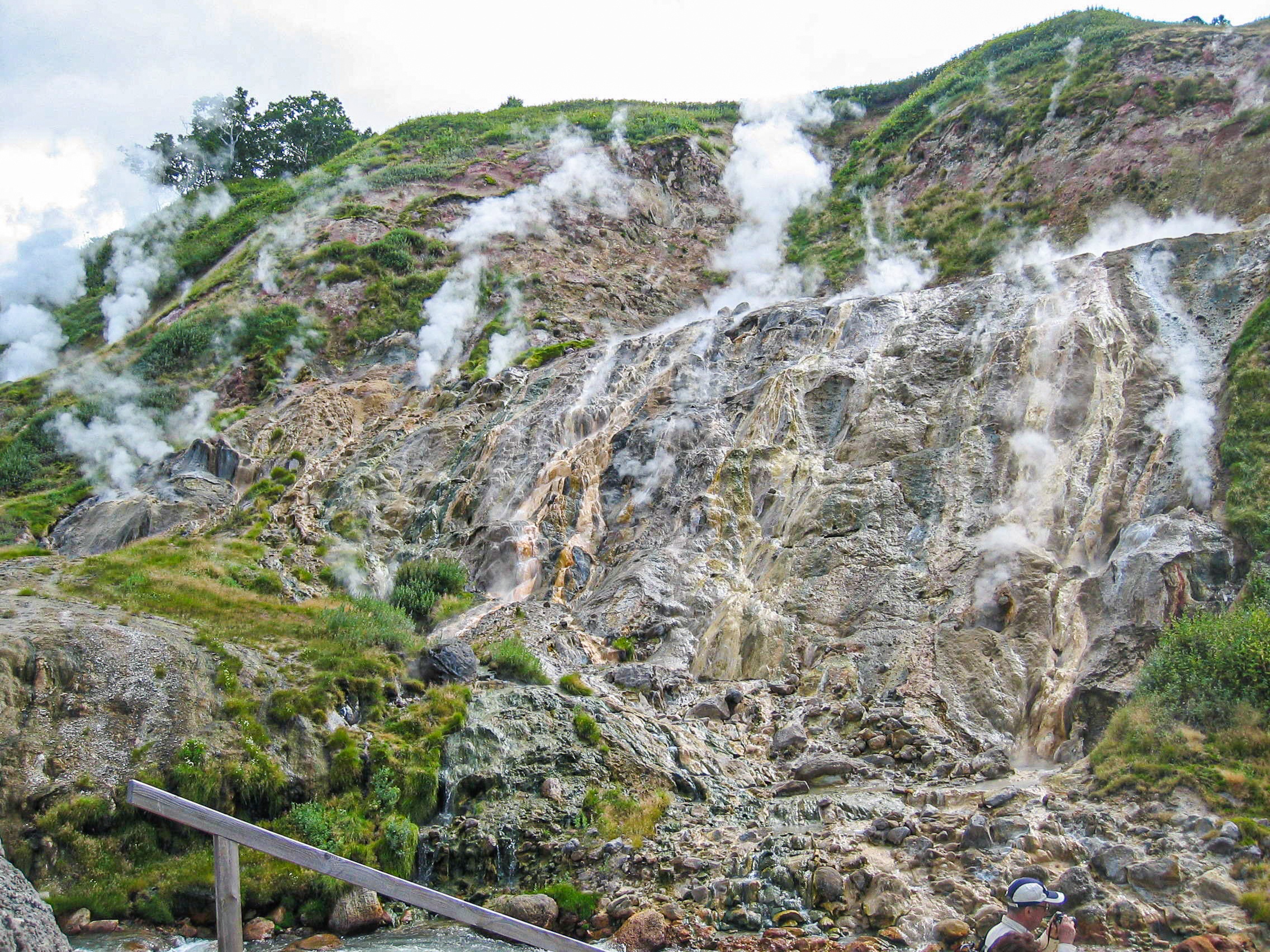
These photos are from 2006. Sadly, the following year, everything changed. In June 2007, a natural disaster struck. A massive section of the mountain directly above the Valley of Geysers ranger station sheared off, sending a landslide down into the valley:
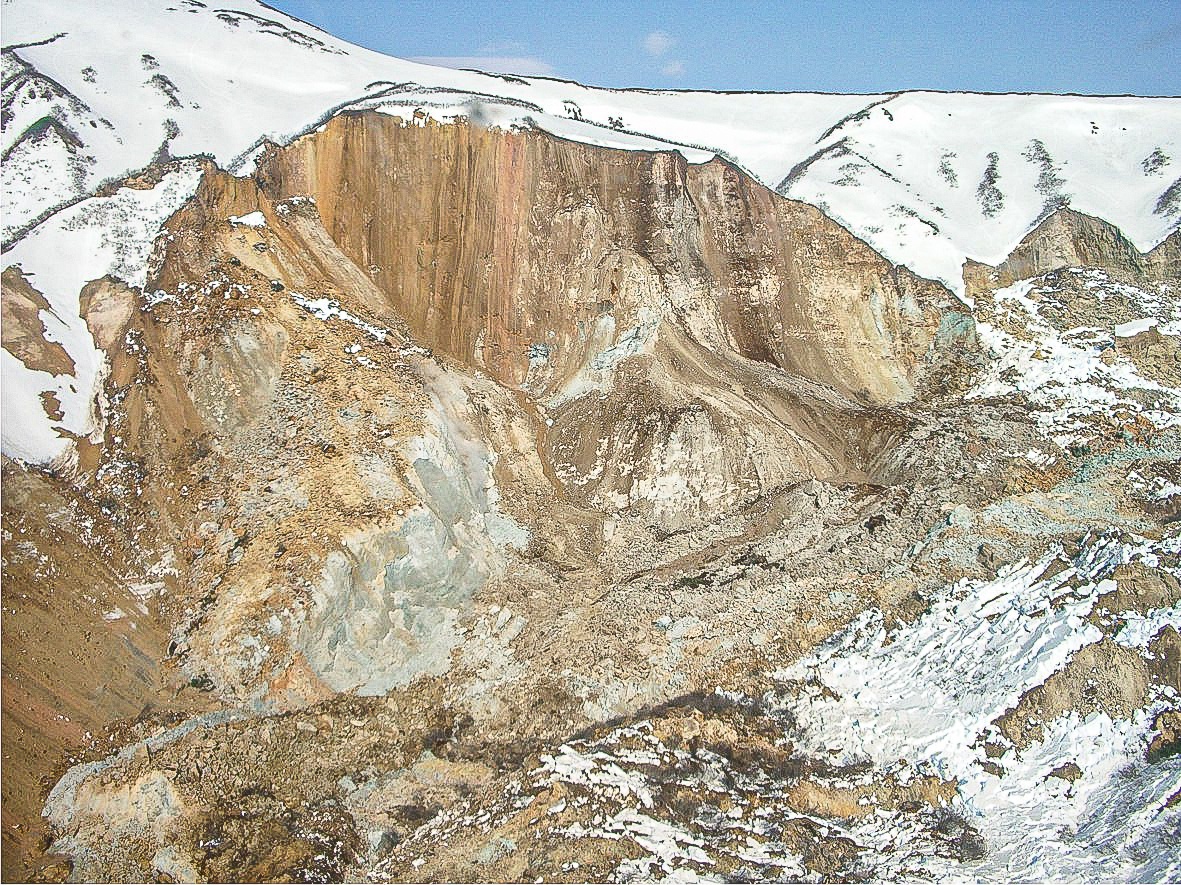
The debris flow dammed the Geysernaya River, creating this rather murky-looking lake:

“Catastrophe! The Valley of Geysers is destroyed!” wailed all sorts of ecologically-oriented doomsayers. “Oh well, it’s not the first time…” was probably the Valley’s own thought on the matter )
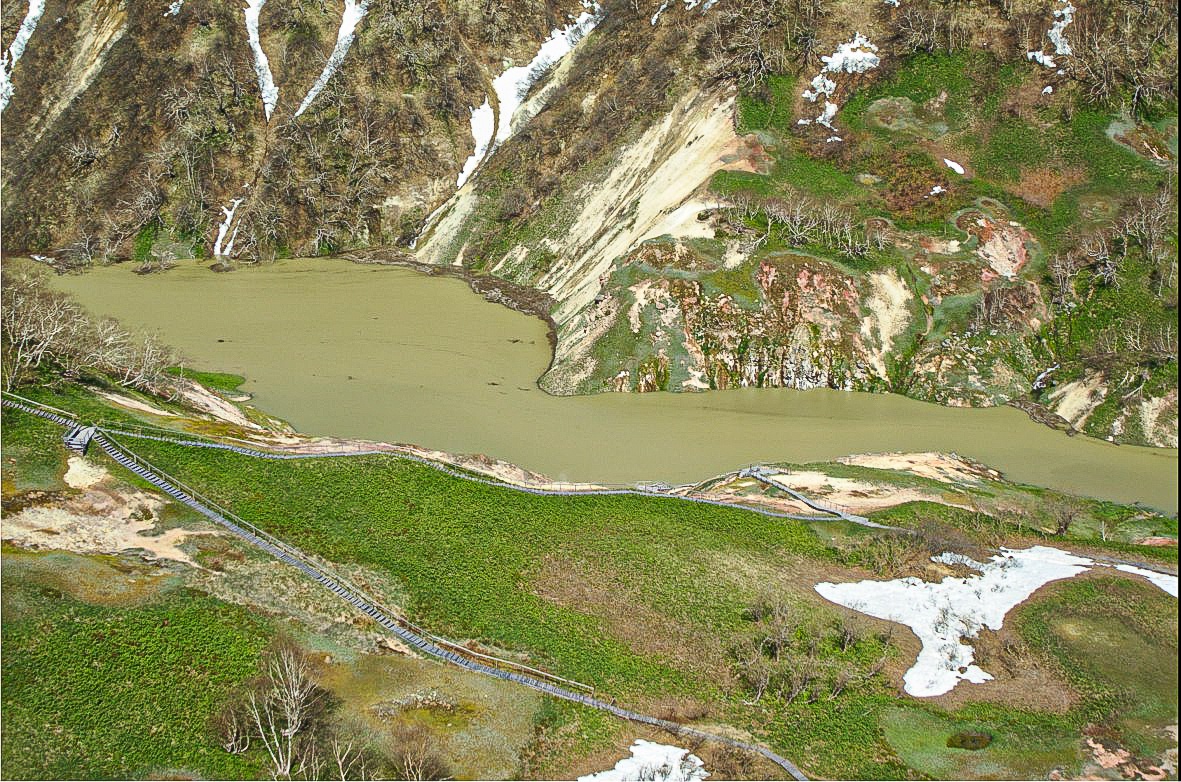
The most incredible part is that the landslide flows could have completely wiped out the buildings in the Valley of Geysers, but they stopped just meters short of them! ->

These are the kinds of photos people sent me back in 2007:

So how was the station saved? What incredible karma protects this ranger station? The only thing that sustained minor damage was the metal shed housing the power generators:

A miracle!

It came within a meter of the most critical infrastructure – and just stopped!

Sadly, several geysers were submerged, but I’m confident this is only temporary.

The tourist infrastructure was also affected. Since then, tours no longer take curious visitors to the other side:
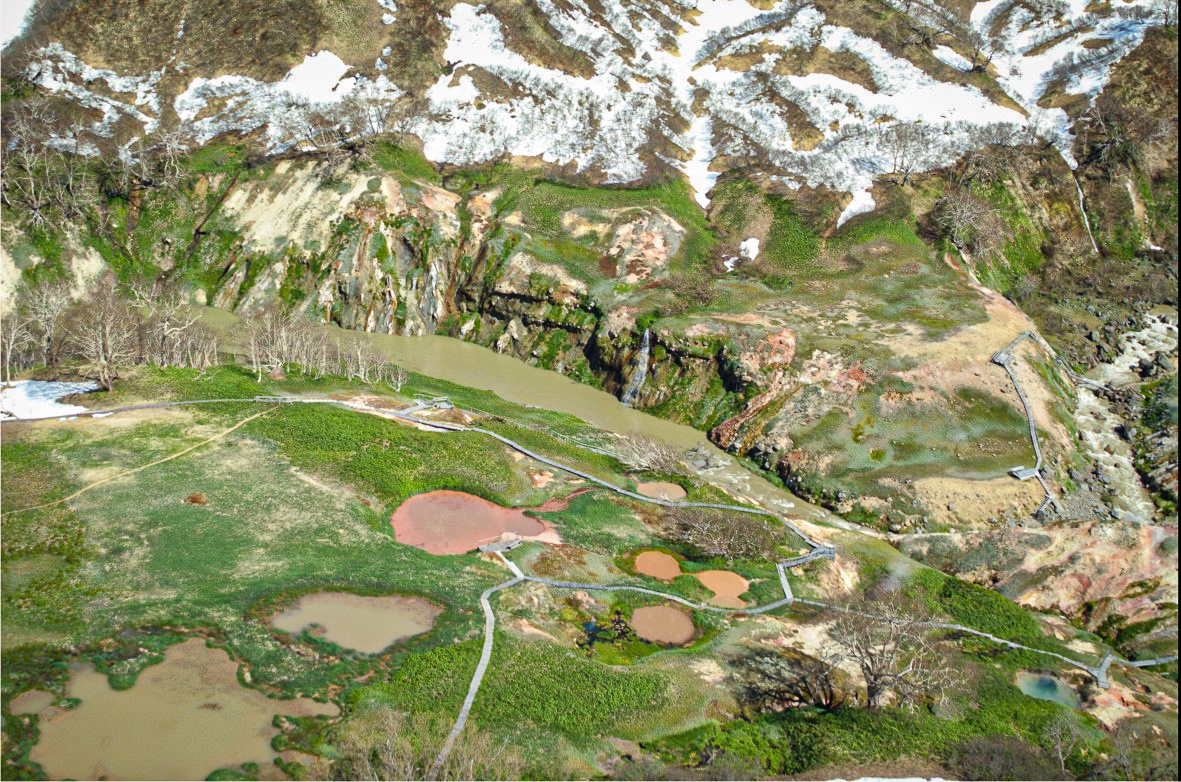
These pictures are from early August 2008.
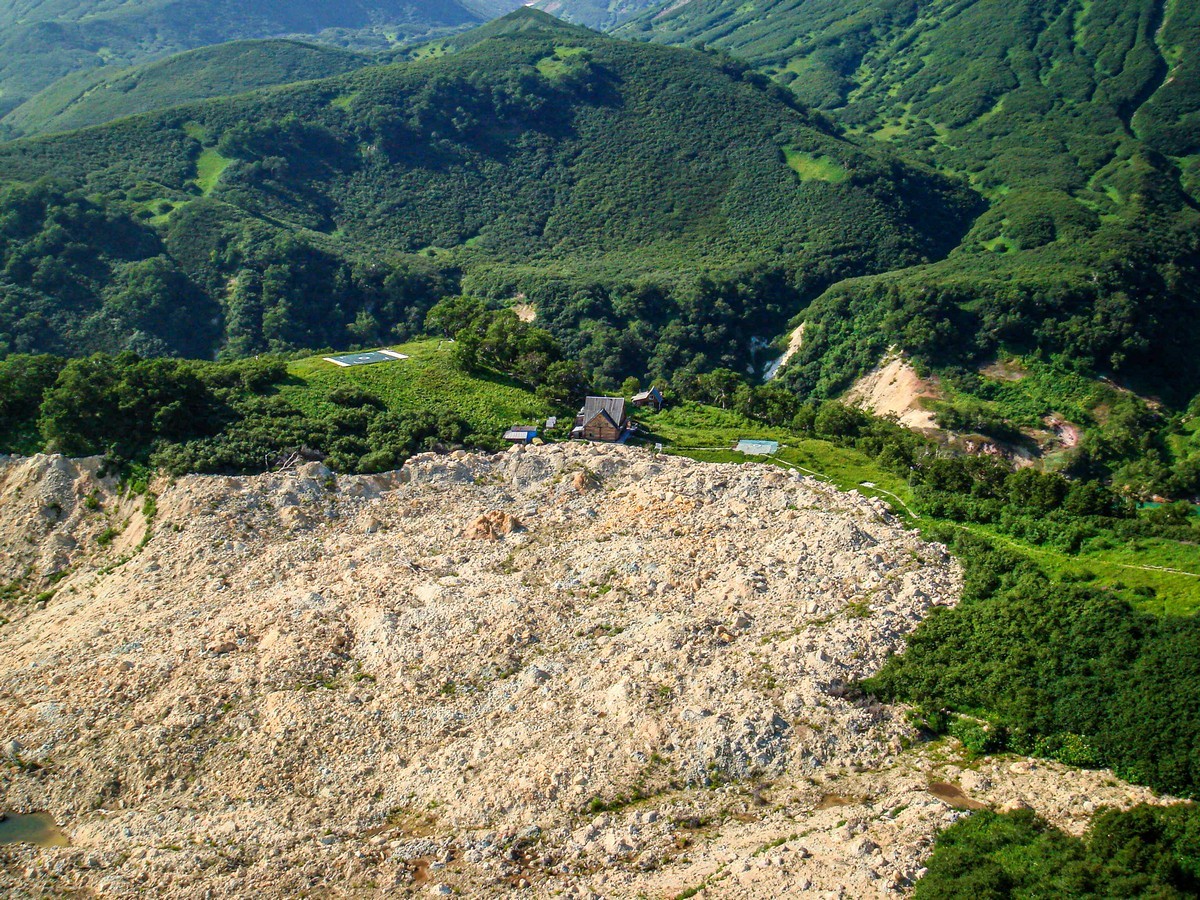
The lake had started to take on a much richer color:
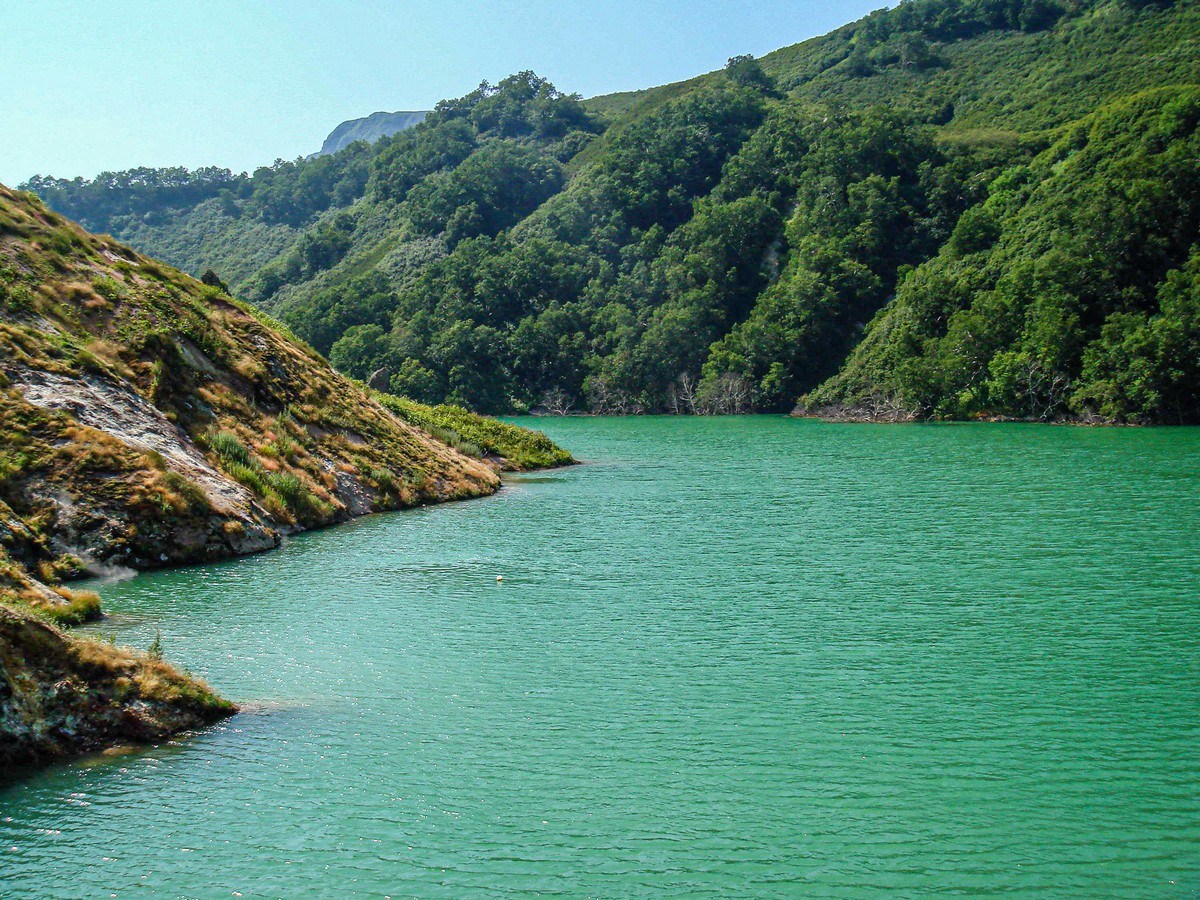
But many geysers were flooded and buried under rock. For example, the Bolshoy (Big) Geyser:
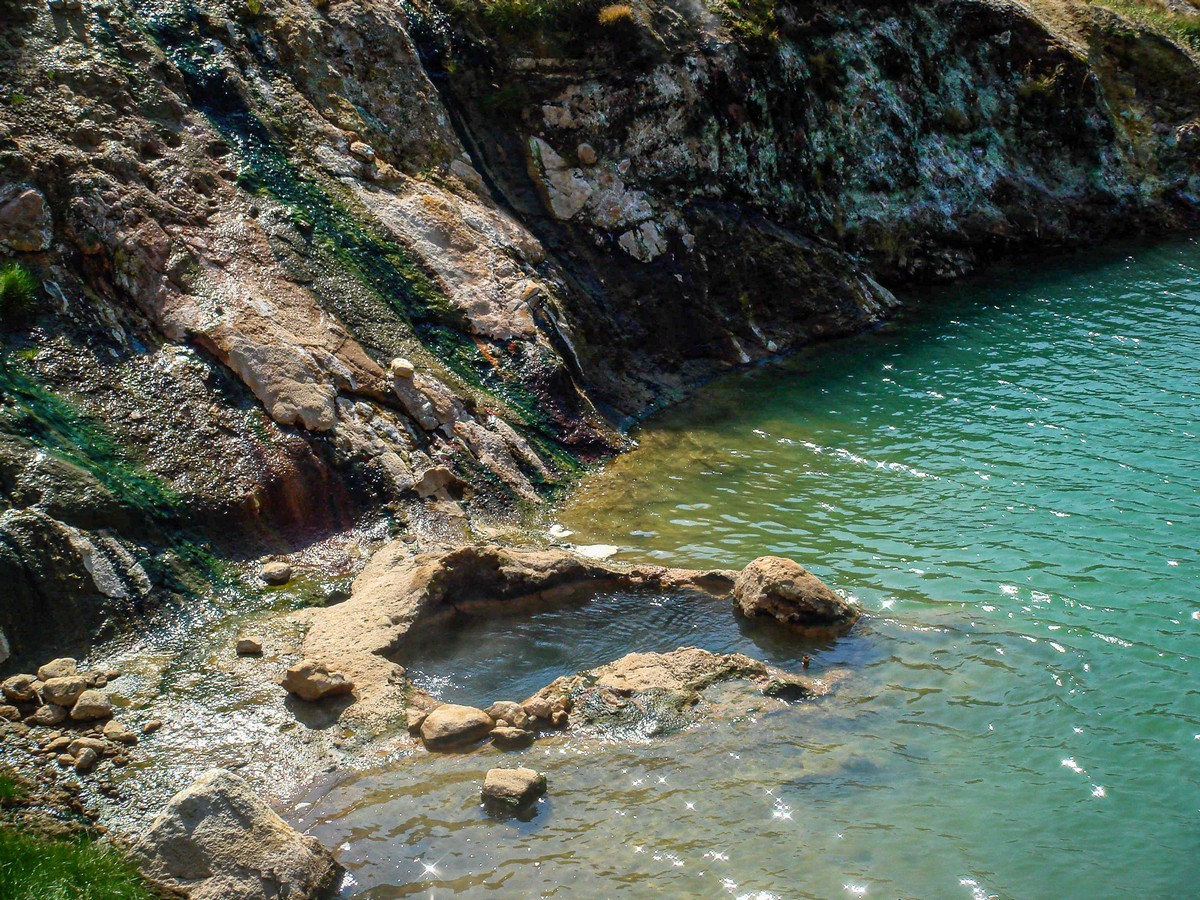
Over time, however, water cut through the natural dam, the lake drained away, and the geysers began a slow recovery. That same Bolshoy Geyser, for instance, is now quite active – erupting regularly about once every hour. In fact, the helicopter tour schedules are coordinated around its eruptions. And, as the story goes, this is the main reason they haven’t rebuilt the bridge to the other side – the tour would become too long, and there simply wouldn’t be enough guides to manage the tourist traffic. So things have stayed more or less as they are now.
We also walked the standard tourist route through the Valley of Geysers. We couldn’t just skip it! I’ve described it many times before, so I’ll be brief here…
The geysers are operational! ->

Not all are fully back to how they used to be; the Velikan (Giant) Geyser, for example, is still not quite its old self – but most of the others are certainly doing their job:
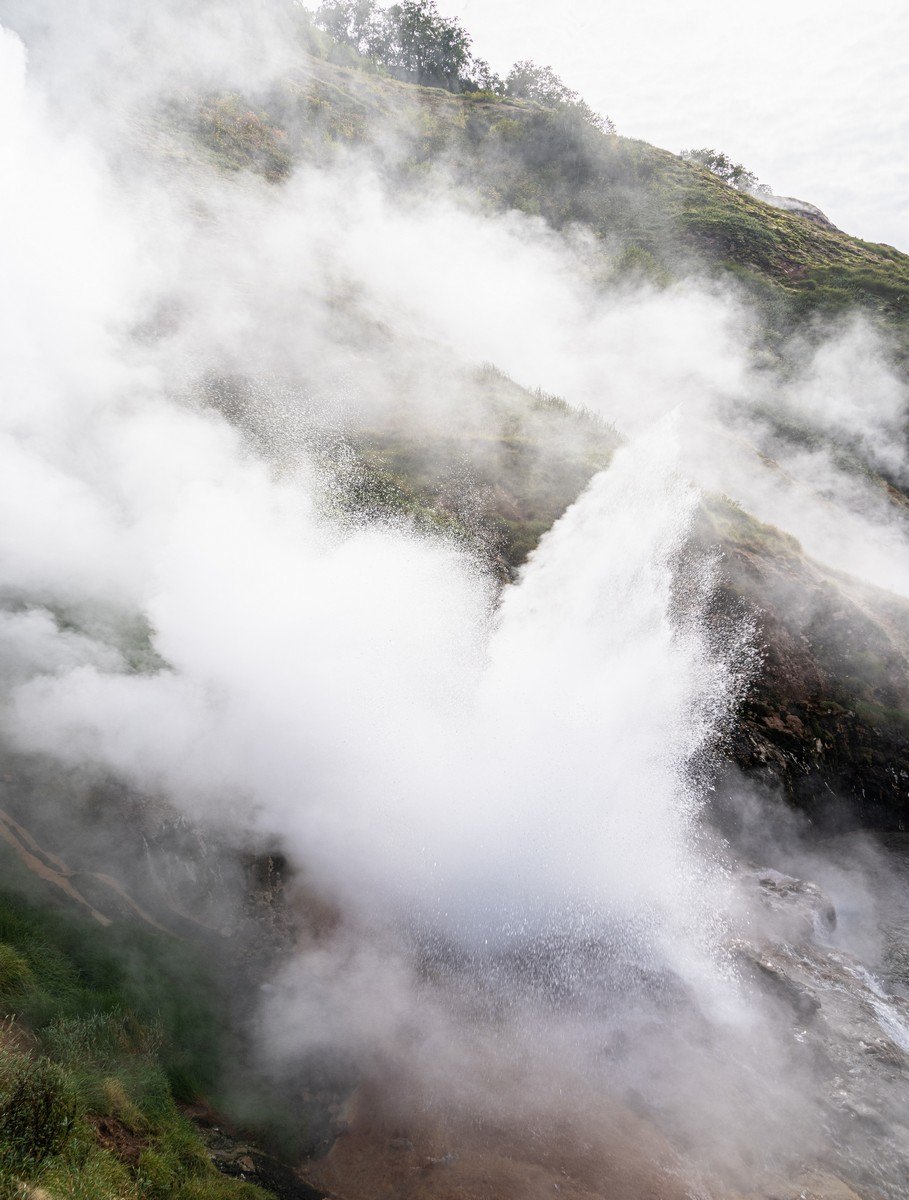
Midori Kumа was delighted:
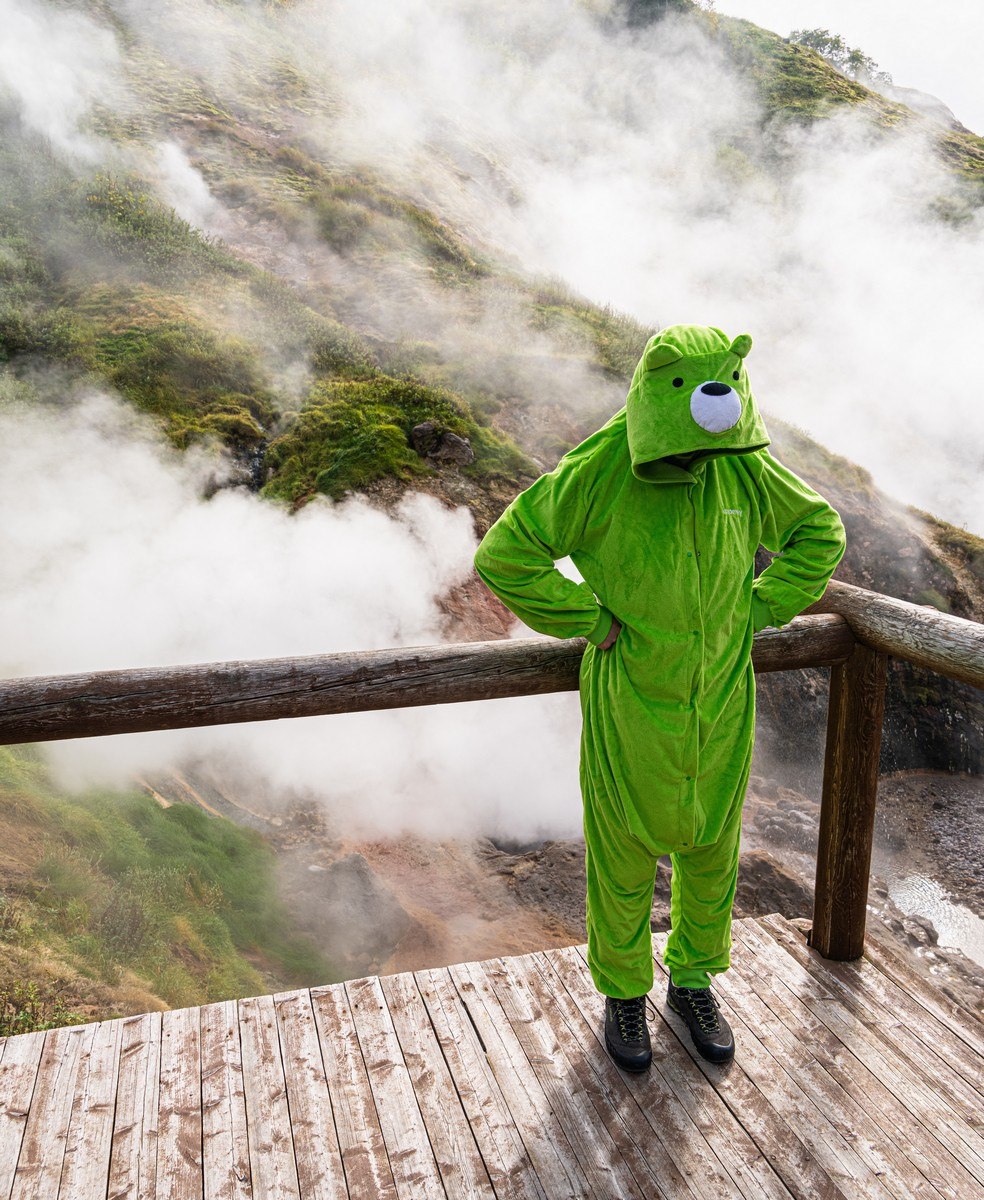
Vitrazh steaming away with its usual vigor:
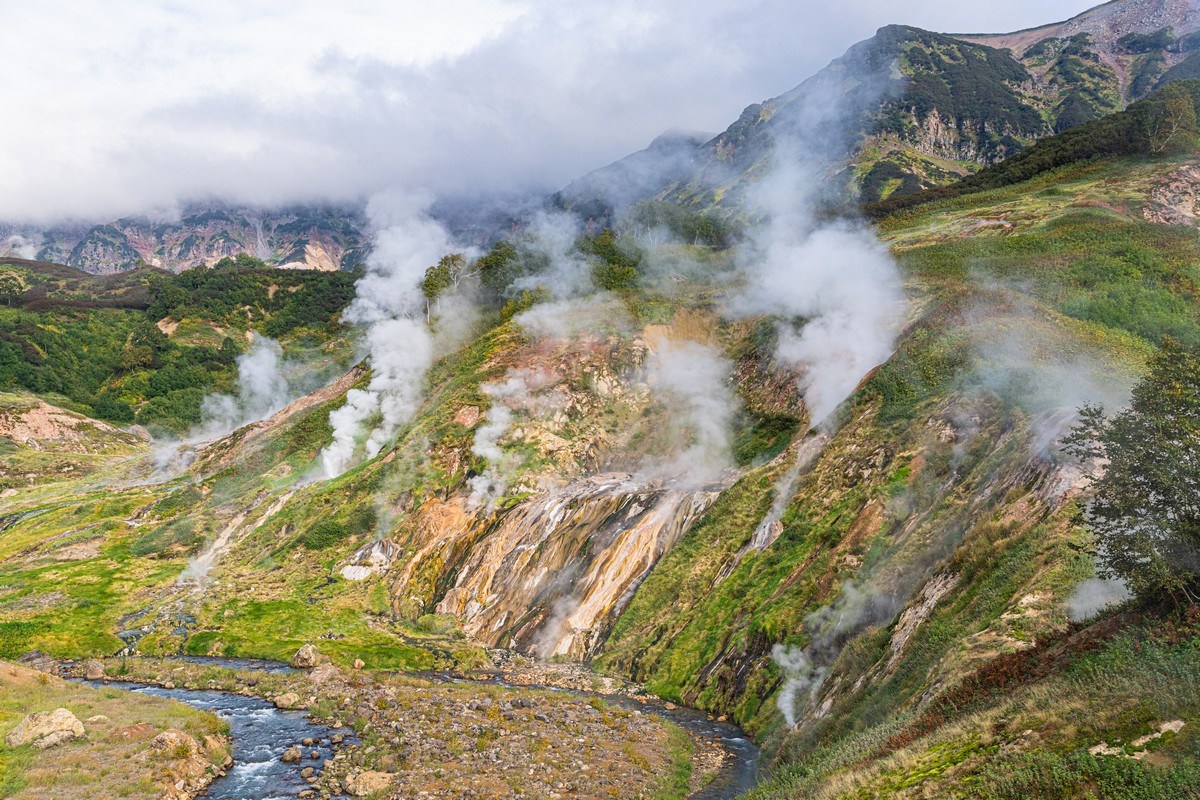
The mud baths dry out a bit by the fall, which is part of their normal seasonal cycle:
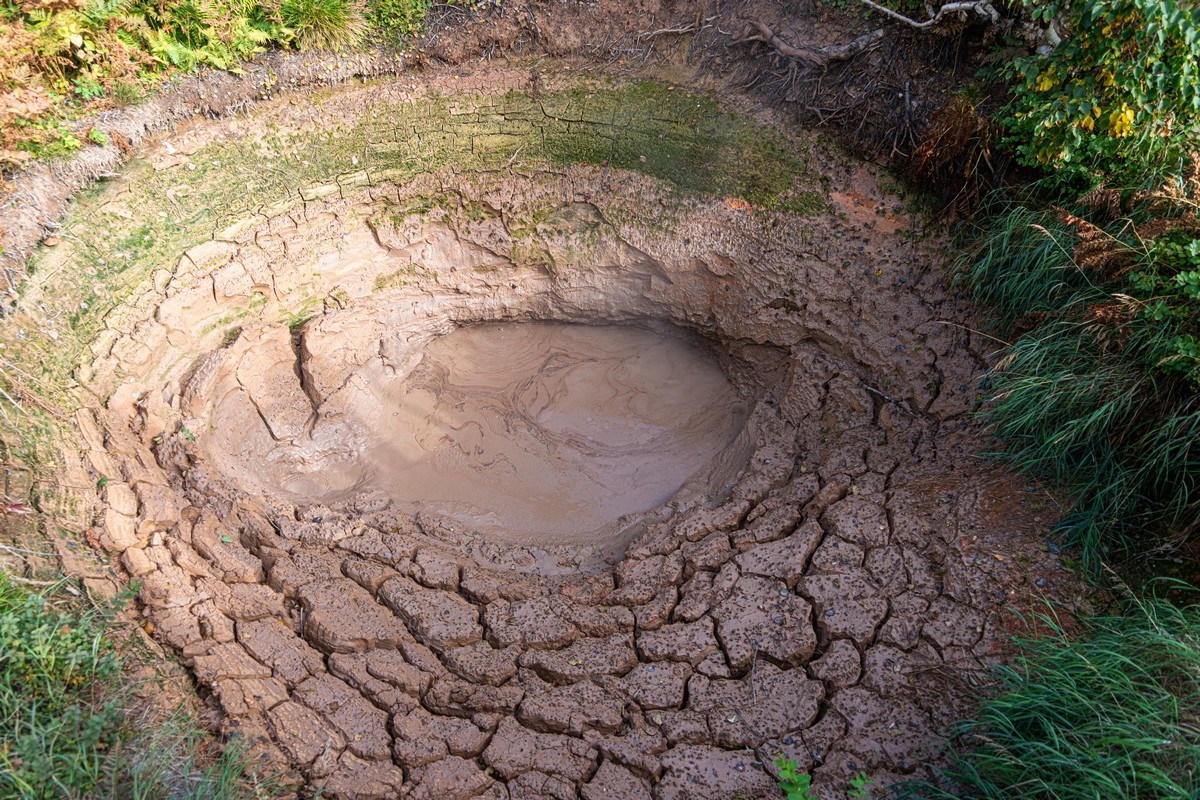
The “Eyes of Hell” are still steaming away and staring ominously at the tourists as always:
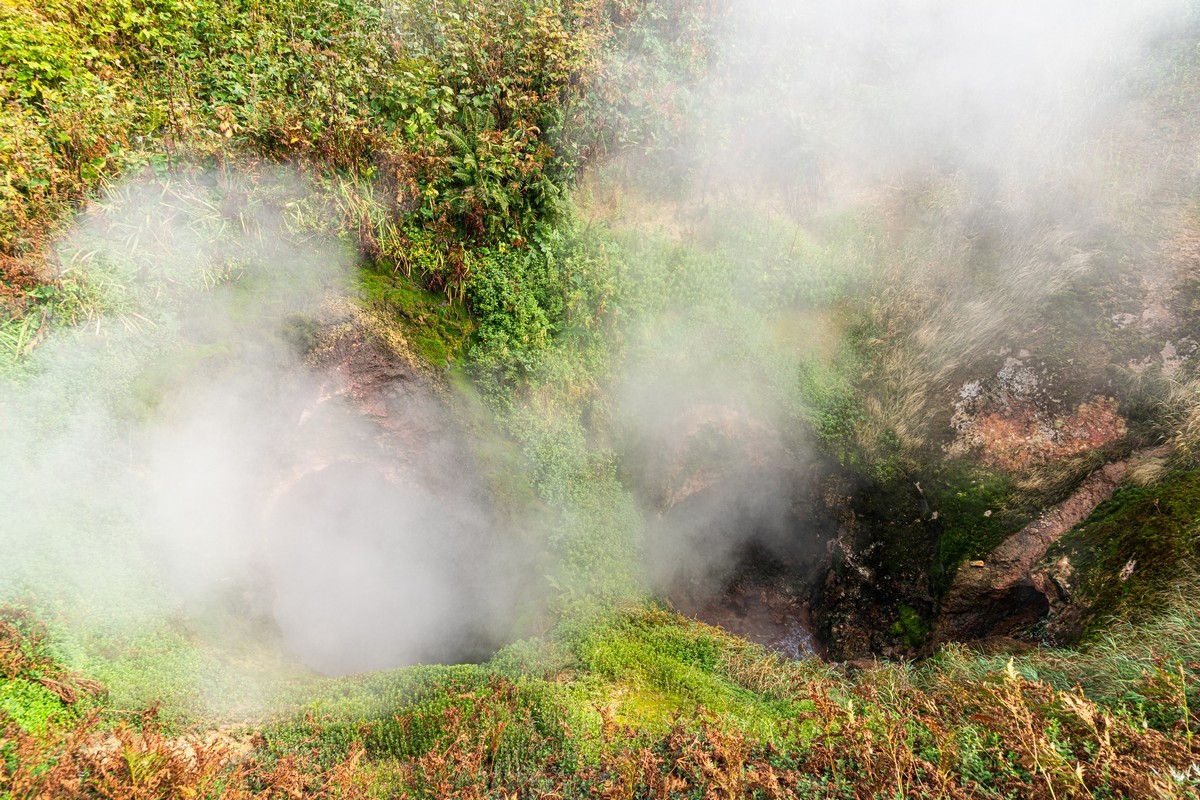
The valley’s other natural wonders are, as ever, present and accounted for:
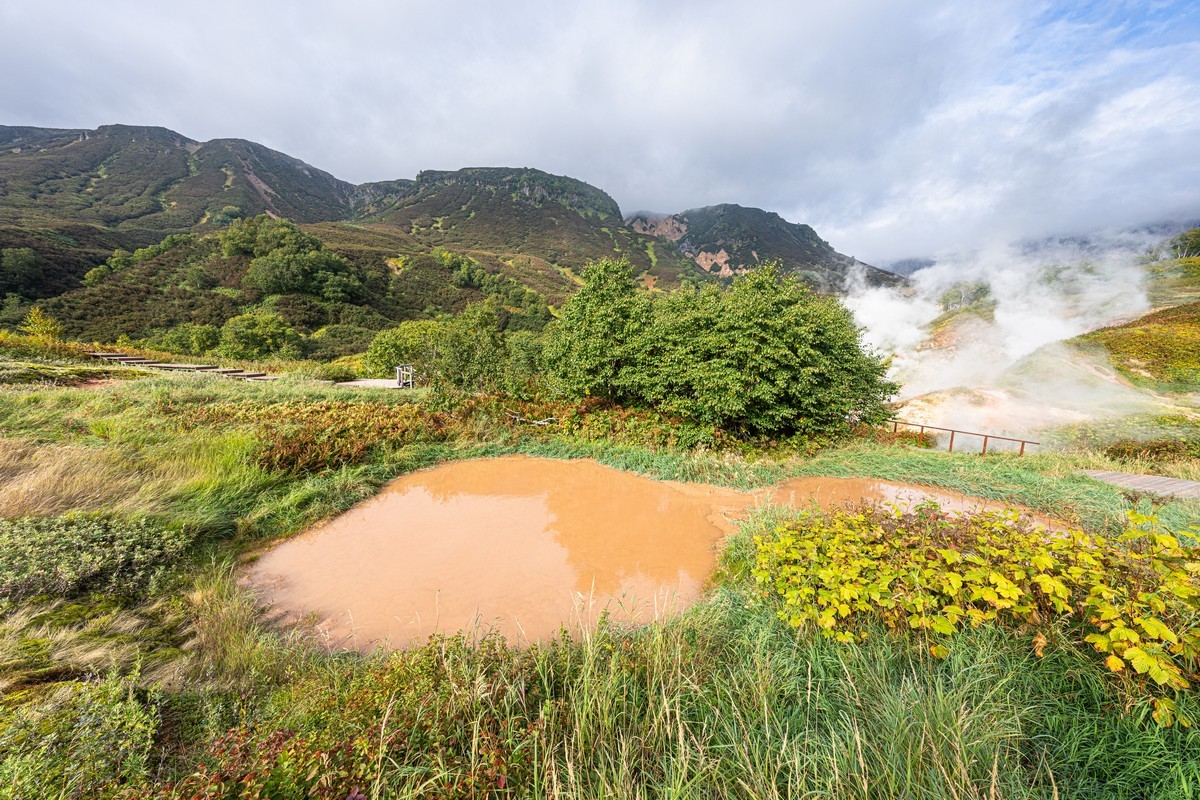
Interestingly, the colors here aren’t very autumnal at all! Not like in neighboring Uzon. Why is that? Unclear. Maybe it’s just warmer in this valley, so fall arrives a little later?
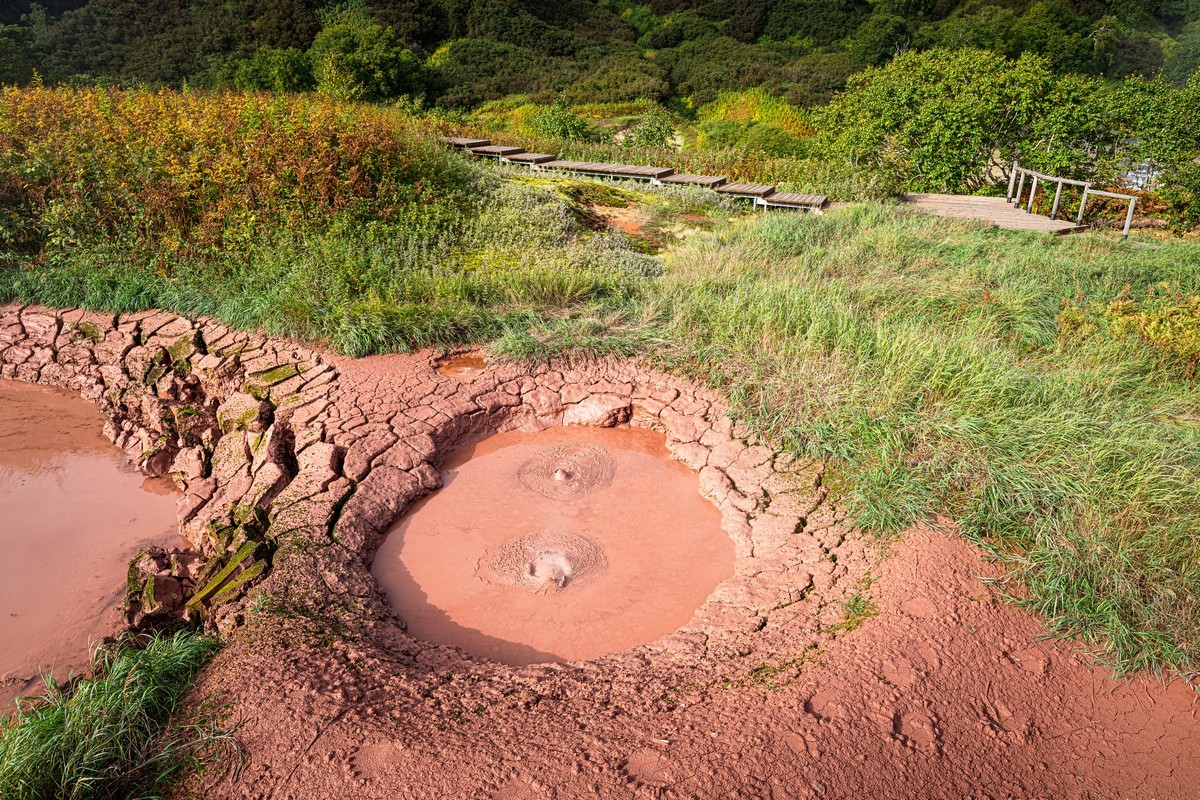
And that’s all from the Valley of Geysers; time to move on!
The best hi-res photos from our Kamchatka fall-2025 trip are here.

